Get Started
Start your business, change your life
Learn how to grow your income with tips and ideas about direct selling and starting your own wellness store. Read success stories and simple guides to help you succeed.

Featured
Dropshipping
-
10
min read
Want to start an online business without investing in inventory? Our complete guide to dropshipping in India explains how to start, what to sell, and how to succeed in 2025. Find out how thousands of Indians are building profitable online stores with zero inventory risk.
Looking to start an online business without keeping stock? Learn how to start a dropshipping business in India that can earn you good money from home. With India's ecommerce market expected to reach USD 350 billion by 2030, now is the perfect time to start your zero-inventory business.
To start dropshipping in India in 2025, you need:
- Basic Setup: Rs 0-20,000
- Website Cost: Rs 0-1500/month
- Marketing Budget: Rs 5000-10,000/month
- GST Registration: Rs 1500-2000 (optional)
With platforms like Wcommerce, you can start dropshipping without investment.
What is Dropshipping?
Dropshipping is a retail business model where you sell products online without keeping any stock. When customers buy from your online store, the supplier ships products directly to them. Recent studies show that 41% of Indian consumers now prefer online shopping, making ecommerce dropshipping an attractive business option.
How Dropshipping Works in India:
- You create your online store
- Customer orders from your store
- You forward the order to supplier
- Supplier ships directly to customer
- You keep the profit margin
Dropshipping Business Checklist for 2025
Essential requirements to start:
- Business Plan
- Choose niche
- Research products
- Set pricing strategy
- Legal Requirements
- Email Address
- Bank Account
- Technical Setup
- Online Store
- Payment Gateway
- Social Media Accounts
- Marketing Plan
- Social Media Strategy
- Content Plan
- Advertising Budget
Why Choose B2C Dropshipping in India?
The dropshipping business model in India offers many benefits for passive income:
- Low investment to start
- No inventory management
- Work from anywhere
- No warehouse needed
- Wide product selection
- Easy scalability
Step-by-Step Guide to Start Dropshipping
1. Choose Your Niche
Want to start an online business without investment? First, select products that:
- Have growing demand
- Are easy to ship
- Offer 30-40% margin
- Have less local competition
Popular categories in online retail:
- Health & wellness products
- Beauty and skincare
- Fashion accessories
- Home decor
- Electronics accessories
2. Find Reliable Partners
Look for platforms like Wcommerce that offer:
- Quality products
- On-time shipping
- Return handling
- Order tracking
- Customer support
3. Set Up Your Online Store
Choose from:
- Ready platforms (fastest start)
- Shopify (easy but paid)
- Custom website (needs technical knowledge)
4. Price Your Products Competitively
Remember to:
- Check market prices
- Include shipping costs
- Consider platform fees
- Keep 30-40% margin
- Stay competitive
5. Market Your Online Store
Best promotion channels:
- WhatsApp business groups
- Facebook & Instagram
- Google ads
- Local community groups
- Friends & family networks
Market Potential and Growth
Recent market research indicates:
- 35% annual growth in online retail
- 79% increase in first-time online shoppers
- 54% growth in tier 2-3 city orders
Dropshipping Market Statistics 2025
Recent data shows promising growth in Indian ecommerce:
- Indian ecommerce market to reach $188 billion by 2025
- 74% of Indian consumers shop online regularly
- Tier 2 and 3 cities show 82% growth in online shopping
- Mobile commerce accounts for 67% of all online sales
Common Challenges in Indian Dropshipping
Shipping and Logistics
- Choose lightweight products
- Focus on high-value items
- Work with reliable shipping partners
Payment Processing
- Use trusted payment gateways
- Offer multiple payment options
- Keep delivery proof
Building Trust
- Show real product photos
- Give honest delivery times
- Respond quickly to queries
Start Without Investment
Begin your journey with:
- Ready platforms like Wcommerce
- Social media marketing
- Free promotion tools
- Gradual growth plan
Legal Requirements
Basic needs:
- GST registration (for pan-India selling)
- Bank account
- Email address
Success Tips for Online Retail
- Start small, grow steadily
- Test market demand
- Focus on customer service
- Keep learning
- Build customer loyalty
Ready to Start Your Journey?
The Indian ecommerce space is growing rapidly, making it the perfect time to start your dropshipping business. With thousands of successful online store owners already earning good income, you too can build a profitable business.
Remember:
- Choose trending products
- Use reliable platforms
- Provide excellent service
- Market consistently
- Stay patient
Frequently Asked Questions About Dropshipping in India
1. Is dropshipping legal in India?
Yes, dropshipping is completely legal in India. You need basic business registrations like PAN and GST (if turnover exceeds ₹20 lakhs annually).
2. How much money do I need to start dropshipping?
You can start dropshipping for free using platforms like Wcommerce. Optional costs include marketing (₹5000-10000/month) and business registration (₹1500-2000).
3. Do I need GST registration for dropshipping?
GST registration is mandatory if your annual turnover exceeds ₹20 lakhs. However, registering early helps build trust and allows pan-India business.
4. Which products are best for dropshipping in India?
Top performing categories include:
- Health & wellness products
- Beauty and skincare
- Electronics accessories
- Home decor items
- Fashion accessories
5. How long does it take to earn profit?
Most dropshippers start seeing profits within 3-6 months with proper marketing. Successful dropshipping stores can earn ₹30,000-1,00,000 monthly.
6. Can I do dropshipping with a full-time job?
Yes, dropshipping can be managed part-time. Many successful store owners start as a side business while keeping their regular jobs.
Want to start your dropshipping business without investment? Create your free Wcommerce store today!
Create Your Free Store Now
Satish Madiraju, M.D., MBA
-
February 7, 2025
Read More
Home Business Ideas: Your Path to Success from the Comfort of Your Home
In recent years, the push towards work-from-home environments has opened the door for many to explore home business ideas. Whether you're seeking small business ideas from home, the cheapest business to start from home, or easy home-based businesses, there are plenty of lucrative options to consider. And let's not forget the emerging trend of digital entrepreneurship, where knowing how to sell on WhatsApp can kickstart a successful venture.
The World of Home-Based Businesses
Starting a business from home is more accessible than ever before. The flexibility, low overhead costs, and ease of managing operations from your living room or study are attracting both budding entrepreneurs and seasoned professionals alike. India, with its rich entrepreneurial spirit, offers a variety of small business ideas from home suitable for different skill levels and financial capabilities.
Online Selling from Home
One of the simplest ways to embark on a home business is through online selling. From the comfort of your own home, you can sell products ranging from handmade crafts to digital goods. Leveraging platforms like Wcommerce, many are discovering low-investment business ideas that eliminate the need for holding inventory. Instead, these home-based businesses employ a dropshipping-style model, making them the cheapest business to start from home.
How to Sell on WhatsApp
An increasingly popular method for promoting products is selling on WhatsApp. With its massive user base in India, WhatsApp offers a personal touch that other platforms may lack. Sharing product links on WhatsApp and engaging directly with potential customers allows for a unique, intimate relationship between buyers and sellers.
Embrace Digital Business from Home
Apart from traditional modes, digital businesses are rapidly gaining traction. Home-based ecommerce options like selling digital courses, consultancy services, or even subscription-based newsletters offer sustainable income opportunities. These easy home-based businesses require minimal upfront investment, focusing more on skill and creative output rather than physical products.
Setting up a Simple At-Home Income Stream
Transitioning to a home business can seem daunting. However, with the right strategy and a bit of persistence, anyone can thrive. Here are some simple steps to follow:
1. Identify Your Niche: Choose a field or product that excites you. Passion fuels dedication and creativity, essential elements of a thriving business.
2. Research and Plan: Conduct market research to ensure demand for your product or service. A well-laid business plan acts as a roadmap to guide you forward.
3. Leverage Social Media: Utilize platforms like Instagram, Facebook, and WhatsApp to reach your audience. Sharing product links on WhatsApp, for instance, can drive sales and referrals.
4. Build an Online Presence: Creating a website or a simple blog can enhance your visibility. Engage through content that provides value and interest to your potential audience.
5. Utilize Dropshipping and Ecommerce Platforms: Selling without inventory is made possible through platforms that connect sellers to suppliers. This model saves time and resources, allowing you to focus on marketing and customer service.
Real-World Success: The Beauty of Home Businesses
Consider the story of Priya, who turned her love for crafting into a thriving online shop. By selling her creations on Instagram and sharing her store link via WhatsApp, Priya has cultivated a loyal customer base. According to the ""Global Entrepreneurship Monitor,"" around 57% of entrepreneurs in India found success through online channels in 2020 (source not confirmed).
Moreover, according to a 2021 report by Statista, ecommerce revenues are expected to show an annual growth rate of 9.44%, resulting in a projected market volume of US$120,810 million by 2025 (source not confirmed). These figures highlight the potential of digital business from home as a viable path to economic independence.
Future Trends and Conclusion
As digital landscapes continue to evolve, the prospects for work-from-home business ideas only grow stronger. Embracing technology, social media, and ecommerce platforms can provide access to a global market, turning your home-based dream into a reality. By exploring small business ideas from home, utilizing platforms for selling, and adopting innovative marketing techniques, you can create a stable income stream. Embarking on this journey may just be the stepping stone to discovering your entrepreneurial potential.
References
1. Global Entrepreneurship Monitor
2. Statista Report 2021
3. Small Business Trends Report 2022

Marketing
-
8
min read
Explore home business ideas and start your successful venture from home.
Subham Kumar
December 12, 2025
How to Earn Money from YouTube Shorts: A Guide for Home-Based Entrepreneurs
Are you one of those creative souls looking to make money online from home? Well, you’re in luck, because YouTube Shorts have opened up exciting avenues for earning money from the comfort of your home. For those pondering “businesses to start from home,” leveraging YouTube Shorts might be your perfect jump-off point. In this blog, we'll explore how to earn money from YouTube Shorts and introduce several home-based online income ideas along the way.
The Magic of YouTube Shorts
YouTube Shorts are short, engaging videos that can last up to 60 seconds. They offer a fun and captivating platform for creators to showcase their talents, humor, or insights. But how do creators earn from Shorts?
YouTube Monetization Options
1. YouTube Partner Program Eligibility: To start earning directly from Shorts, join the YouTube Partner Program (YPP). As of 2023, you need at least 1,000 subscribers and 4,000 valid public watch hours within the past 12 months, or 10 million valid public Shorts views within the past 90 days.
2. YouTube Shorts Ads Revenue: While traditional YouTube videos make money through ads, Google has announced experimenting with ads on Shorts, offering creators a slice of the revenue pie.
3. YouTube Shorts Fund: In 2021, YouTube introduced a $100 million fund to reward creators for producing popular Shorts, with payouts of up to $10,000 per month.
Diversifying Income Streams
Brand Collaborations for Creators
Many brands are eager to partner with creative influencers using YouTube Shorts. Whether featuring a product or joining a campaign, brand collaborations are lucrative. Creators can receive direct payments or commissions based on sales.
Affiliate Marketing Using Shorts
Create engaging content and subtly integrate affiliate links, like those from Amazon or Flipkart. For instance, if you showcase a product in your Short, direct your viewers to purchase through your affiliate link, earning a commission on each sale.
Selling Products Online from Home
Creating your own ecommerce store allows for another layer of monetization. Use platforms like Wcommerce, which enable selling 600+ products without holding inventory, to establish a home business model for creators.
Dropshipping Platforms for Creators
Dropshipping eliminates the need for holding inventory. Use platforms designed for creators to sell products through your Shorts without managing stock, which means potential profits with lower overhead costs.
Online Business Ideas for Beginners
Venturing into YouTube Shorts isn’t just about video creation—it's about embracing various online business models. Here's how beginners can tap into other opportunities:
1. Earn Money Without Investment from Home: Start with tools and platforms that don’t require upfront investment. For instance, incorporate free online tools for video editing to begin your Shorts journey.
2. Passive Income Using YouTube: It might take time, but setting up revenue streams such as ad revenue, brand deals, and affiliate marketing can generate passive income with consistent growth.
3. Home-Based Online Income Ideas: Beyond YouTube, explore parallel online businesses like freelancing, blogging, and digital marketing that can complement and boost your earnings from Shorts.
Conclusion: Start Your YouTube Shorts Journey Today
YouTube Shorts present a fantastic opportunity for creators searching for businesses to start from home. Through a mix of YouTube payouts, ads revenue, brand partnerships, and affiliate marketing, you can create a sustainable home business model from your passion. Exploring ecommerce options like dropshipping or platforms that don’t require inventory can further broaden your income channels. Dive into this exciting space and turn your creativity into a thriving home-based online income.
For further insights on setting up a home business, don’t forget to check out our upcoming article on “Businesses to Start from Home.”
References
1. YouTube Official Blog
2. Statista
3. Google Support Pages
4. Business Insider India
5. Entrepreneur Magazine
.png)
Online Earning
-
8
min read
How to earn money from YouTube Shorts
Learn to monetise YouTube Shorts and earn from home easily.
Subham Kumar
-
December 12, 2025
How to Promote a Small Business for Free
In today's competitive market, discovering how to promote a small business for free is vital for entrepreneurs who want to maximize their reach without straining their budget. While there are numerous ways to achieve this, embracing the right frameworks and mindset can significantly enhance your strategy. You don't need deep pockets to effectively publicize your offerings. With the right approach, zero-budget marketing becomes not just a possibility but a thriving practice.
Adopt the Right Mindset for Free Marketing Success
To promote small business without money, it's crucial to first adopt a proactive and creative mindset. Think of zero-budget marketing as a challenge to innovate and connect with your audience in authentic ways. Here are frameworks to guide you:
- Leverage Existing Networks: Your initial strategy should involve reaching out within your current connections. Friends, family, and existing customers can become valuable brand advocates.
- Focus on Quality Content: Strive to provide value through content that educates, entertains, or inspires. A well-written blog or engaging social media post can catalyze word-of-mouth promotion.
How to Promote a Small Business for Free: Practical Frameworks
1. Utilize Social Media Platforms
Harness the power of social media by creating engaging content tailored to each platform. Facebook, Instagram, Twitter, and LinkedIn offer different ways to connect with potential customers without cost.
Tip: Join groups or communities relevant to your industry. Engaging in these spaces can position you as a thought leader and attract followers.
2. SEO and Content Marketing
Invest time into understanding and applying basic SEO practices to ensure your website is easily discoverable. Writing blog posts around keywords like "free marketing ideas for small business" can help attract organic traffic.
Did you know? According to a study by BrightEdge, 68% of online experiences begin with a search engine.
3. Collaborate with Local Businesses
Look into forming partnerships with non-competing local businesses. Cross-promotion can expose your brand to a whole new audience and vice versa.
Example: A coffee shop might collaborate with a bookstore to host joint events.
4. Embrace User-Generated Content
Encourage your customers to share their experiences with your products or services. This not only provides free advertising for your small business but also boosts credibility.
Stat: According to a survey, 79% of people say user-generated content highly impacts their purchasing decisions.
Strategy Over Tactics: Think Long Term
It's tempting to jump from one tactic to another, but having a holistic strategy ensures sustained growth. Here's how to maintain focus:
- Set Clear Goals: Whether it’s increasing website traffic or customer engagement, align every marketing effort with specific goals.
- Measure and Adjust: Use free analytics tools like Google Analytics to track performance. Analyze these metrics to refine your approach.
Building a Sustainable, Cost-Free Marketing Strategy
While there's no one-size-fits-all solution, committing to these frameworks can help grow a small business for free. Consider strategies like engaging with online communities, creating shareable content, and reaching out for collaborations consistently. Remember, how you promote a small business for free often hinges on how resourceful and creative you can be under constraints.
Conclusion
Understanding how to promote a small business for free involves a blend of mindset, strategic planning, and leveraging available resources creatively. By focusing on zero-budget marketing strategies, you can not only increase visibility but also build a loyal customer base without financial investment. As you refine your approach and adopt these frameworks, you'll see how feasible it is to grow a small business for free.
.svg)
Marketing
-
8
min read
How to promote a small business for free
Learn how to promote your small business without spending any money.
Subham Kumar
-
December 8, 2025
Best Online Business to Start: Zero Investment Guide
Starting a business online without money may sound like a daunting task, but thanks to the digital revolution, it's more achievable than ever. With a bit of creativity and a lot of dedication, it's possible to set up an ecommerce store with zero to minimal investment. In this guide, I will show you the best online business to start without spending a fortune. Let's dive into how you can begin your journey in ecommerce, the tools you'll need, and the strategies you can employ to succeed without investing heavily.
Why Ecommerce?
Ecommerce is a booming industry with tremendous growth potential. In India alone, the ecommerce market is expected to reach $200 billion by 2026 (source: IBEF, 2020). This rapid growth is driven by increasing smartphone penetration and improved online payment experiences. For beginners, ecommerce presents an opportunity to reach a vast customer base without the expense and risk associated with a physical storefront.
How Can I Start Online Business Without Investment?
Starting an online business without investment primarily involves utilizing free tools and resources available online. Here’s a brief overview:
Free Online Store Tools
- Wix: Known for its user-friendly interface, Wix allows you to create a website without coding. With its free plan, you can set up a basic online store in no time.
- Odoo: An open-source ERP with a comprehensive suite of business applications. Odoo’s free plan offers essential ecommerce features that enable you to start an online store without any upfront cost.
- Wcommerce: A popular onine platfrom that 25000+ people are already using to create their online ecommerce store for free and sell 600+ products without any inventory.
Simple E-commerce Builder
A simple e-commerce builder is essential for beginners. These platforms often offer drag-and-drop functionalities, meaning you don’t need to be a tech expert to design a professional-looking store. With tools like Wix and WooCommerce, you can efficiently create a stunning site that rivals any high-budget store.
Zero-Budget Digital Marketing
Once your store is live, focus on zero-budget digital marketing strategies to attract customers:
- Social Media Marketing: Use social media platforms like Instagram, Facebook, and Twitter to promote your products for free. Engage your audience with regular updates, engaging stories, and customer testimonials.
- Content Marketing: Start a blog related to your products. This helps with SEO and establishes authority in your niche. Write insightful articles that answer potential customer questions – a great way to drive organic traffic.
- Email Marketing: Build an email list from day one. Free tools like Mailchimp offer powerful features to connect with your audience without spending a dime.
If you want more detailed strategies, you can read my complete guide on how to promote a small business for free.
Create Website Without Coding
Don’t let a lack of coding skills stop you from starting your online business. Platforms like Shopify and Squarespace, along with the aforementioned Wix, offer comprehensive guides and templates. They simplify the process of building and running an ecommerce store. With these, creating a website without coding knowledge is not only possible, but practical. But currently there are many platfroms in the market like Wcommerce that allows to directly open a ecommerce store without creating any website. They provide a built-in ecommerce store when you create a store there.
Case Study: A Real Example
Consider the inspiring story of someone who started their business with zero investment. Rinku, an entrepreneur from a rural village in Odisha, is now earning daily with constant orders coming through his online store. By using free tools like Wcommerce to create his store and selling 600+ products without keeping any inventory, along with social media and local marketing, Rinku is scaling his business every day. He only focuses on promotion because packing and delivery are taken care of by the platform.
Conclusion: Best Online Business to Start
In conclusion, the best online business to start if you're under budget constraints is undoubtedly in the ecommerce sector. With the wealth of free online store tools, no-cost ecommerce setup options, and the ability to create a website without coding, starting an online business has never been more accessible. Remember, dedication and creativity can turn your zero-investment business into a profitable venture. Start small, leverage free tools, and build your empire.
References
- IBEF (India Brand Equity Foundation), 2020
- Odoo Official Website
.svg)
E-Commerce
-
8
min read
How to start a business online without money
Learn to start an online business without investment using free tools.
Subham Kumar
-
December 8, 2025
Looking for something that helps you glow from the inside out? Say hello to marine collagen-a natural protein sourced from the sea that’s making serious waves in the world of beauty and wellness.
Whether you’re trying to get that dewy skin glow, boost hair growth, or just move without your joints creaking-marine collagen peptides might be your new favorite ritual. Plus, they’re clean, easy to absorb, and sustainably sourced from wild caught fish. What’s not to love?
In this blog, we’ll break down what marine collagen really is, why it works so well, how it benefits your hair, nails and skin, and how nutrients like marine magnesium and resveratrol powder can supercharge its effects.
So, what exactly is Marine Collagen?
Collagen is the most abundant protein that can be found in bones, musclwes, hair, etc. Body produces this naturally but overtime as age increases (>20) collagen starts to reduce. Marine collagen comes from fish-specifically the skin, bones, and scales of wild caught fish like cod and snapper. It’s packed with Type I collagen-the type your body uses most in skin, hair, nails, bones, and tendons.
The best part? It’s hydrolyzed into marine collagen peptides-tiny protein bits your body can absorb quickly and start using almost immediately.
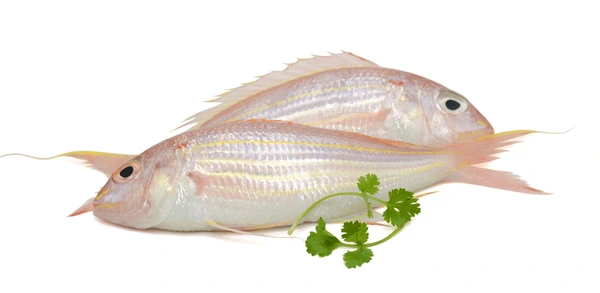
A few powerful amino acids in Marine Collagen:
Marine collagen contains 19 amino acids, including the essential amino acids as follow-
- Glycine – Helps with restful sleep and tissue repair
- Proline – Tightens and firms skin naturally
- Hydroxyproline – Boosts collagen stability and skin elasticity
Why Marine Collagen peptides are so popular
Let’s face it-collagen is everywhere. But marine collagen peptides are leading the pack. Why?
- They’re smaller in size, so your body absorbs them fast
- No hormones or antibiotics-just clean, ocean-sourced protein
- Great if you’re pescatarian or avoid red meat
- Often sourced from fish parts that would otherwise go to waste (sustainability at it's best!)
Add a scoop to your coffee, smoothie, or even your soup. You won’t taste a thing, but your skin, hair, and joints will thank you.
Real benefits for hair, nails and skin
Marine collagen stands out for its proven effectiveness, delivering visible and tangible results.
For Hair:
- Encourages stronger, thicker strands
- Helps reduce breakage and hair fall
- May even support new growth over time
For Skin:
- Boosts hydration and elasticity
- Softens fine lines and wrinkles
- Helps heal acne scars and evens skin tone
For Nails:
- Strengthens brittle nails
- Reduces splitting and peeling
- Promotes healthy, faster growth
A winning duo: Marine Collagen + Marine Magnesium
Want to take your collagen game to the next level? Pair it with marine magnesium.
Magnesium plays a vital role in everything from energy levels to beauty sleep. When it comes from marine sources, it’s even more bioavailable and clean.
Together, marine collagen and marine magnesium help:
- Calm stress and improve sleep
- Support protein production (including collagen!)
- Reduce inflammation, helping your skin heal faster
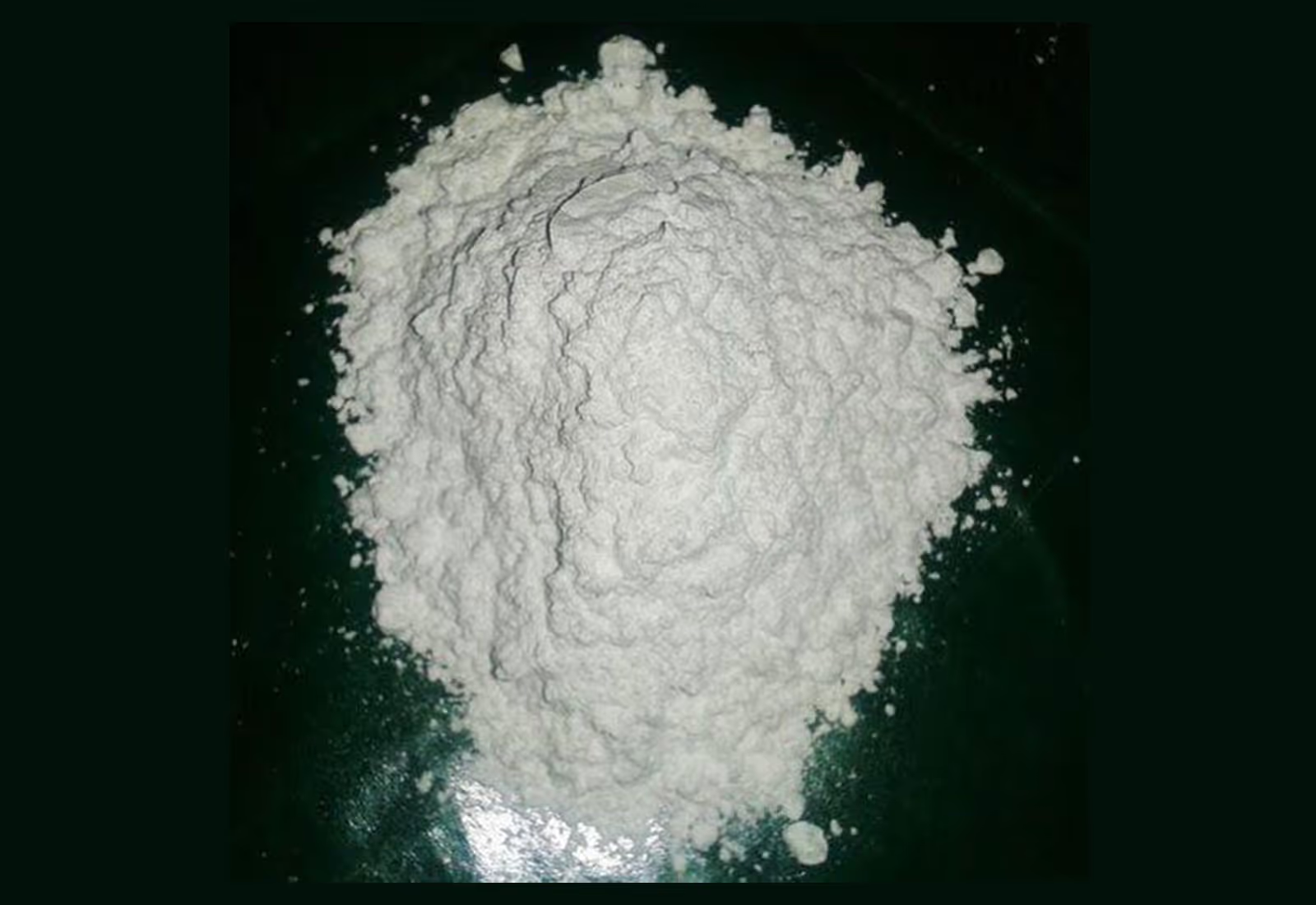
Why the wild caught fish?
Not all fish are equal, and that matters when it comes to what you put in your body. Wild caught fish are raised in their natural environment-meaning they’re free from antibiotics, hormones, and harmful feed.
Why this matters:
- They’re richer in nutrients like omega-3s and zinc
- They don’t accumulate toxins like many farmed fish do
- They’re better for the planet (when responsibly harvested)
If the label doesn’t say wild caught, it’s best to skip it.
Pro Tip: Add Resveratrol Powder to the Mix
Here’s a beauty hack you don’t want to miss: combine marine collagen peptides with resveratrol powder for amplified anti-aging power.
Resveratrol-found in grapes and berries-is a potent antioxidant that:
- Protects your skin from damage caused by sun and pollution
- Improves circulation, helping skin look bright and fresh
- Boosts collagen production, especially with Vitamin C
It’s a perfect pairing. Think of it as a skincare smoothie-for your whole body.
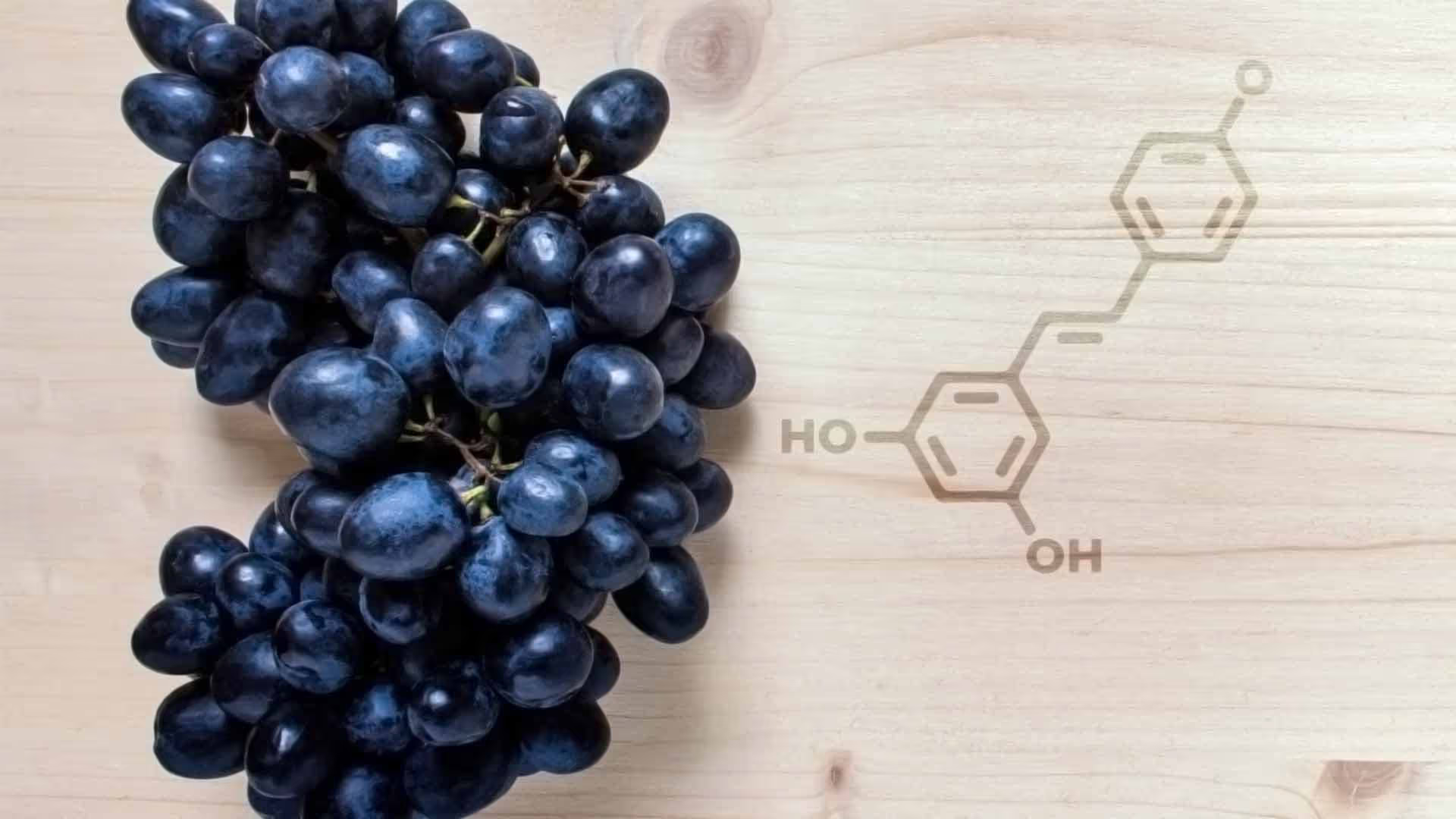
How Does It Compare to Other Collagen Types?
Let’s look at how marine collagen stacks up.
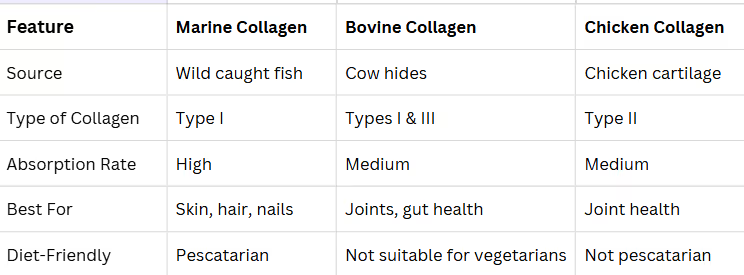
Any Side Effects to Worry About?
In general, marine collagen is well-tolerated. But it’s always good to:
- Check the label if you’re allergic to fish
- Stick to the recommended dose (5–10g per day is standard)
- Talk to your doctor if you’re pregnant, breastfeeding, or on medication
Also, buy only from trusted brands that use wild caught fish and are tested for purity.
How to Choose the Right Marine Collagen Supplement
Not all products are made equal. Look for:
Clearly labeled wild caught fish source
Hydrolyzed peptides for better absorption
Free from artificial fillers, sweeteners, or additives
Third-party tested for safety and quality
Optional add-ons like marine magnesium or resveratrol powder for bonus benefits
If a product checks all those boxes-you’re golden.
Final Takeaway
Whether you're in your 20s or 50s, investing in your skin and health from within is always a good idea. And marine collagen makes it easy.
It supports smoother skin, stronger hair and nails, better sleep, and even joint flexibility. When paired with marine magnesium and resveratrol powder, you’re setting yourself up for glowing, long-term results.
Sell these products free of cost in your store today
With Wcommerce, you can open your own wellness store and sell trending products like marine collagen without worrying about inventory, shipping, or customer service.
Sell these products free of cost in your store today, open your own store today.

Specialty Supplements
-
8
min read
Marine Collagen: The beauty and wellness secret from the sea
Boost your glow with marine collagen! Supports youthful skin, strong hair & nails. Made from wild caught fish & easy to mix into drinks daily.
Dr.Uttara Ghatge, B.D.S
-
July 29, 2025
Often called the “miracle tree,” moringa powder is loaded with essential vitamins, minerals, and antioxidants that your body loves. It supports everything from stronger immunity to healthier skin, hair, and nails—making it a true everyday superfood.
Whether you’re just discovering moringa or looking for better ways to use it, this blog will walk you through its top benefits, everyday uses, and even how to make moringa powder at home.
Moringa powder benefits: Why you need it every day
Let’s break down the incredible moringa powder benefits-for your energy, digestion, immunity, and even your beauty routine.
1. Boosts Immunity
Rich in Vitamin C and antioxidants, moringa strengthens your body’s natural defenses and helps fight inflammation and infections.
2. Enhances Energy Levels
Tired of caffeine crashes? Moringa provides a natural energy lift thanks to iron and B-vitamins without the jittery side effects of coffee.
3. Supports Healthy Digestion
Moringa's high fiber content improves gut health, reduces bloating, and keeps your digestive system running smoothly.
4. Balances Blood Sugar
Studies suggest moringa may help lower blood sugar levels due to compounds like isothiocyanates and chlorogenic acid.
5. Detoxifies the Body
Its chlorophyll content helps eliminate toxins and heavy metals from the body, making it an excellent daily detox aid.
Beauty boost: Moringa powder benefits for hair, nails and skin
Yes, this superfood works wonders on the outside too! Here are the top benefits for hair, nails and skin:
Hair:
- Stimulates hair growth with iron and zinc
- Reduces dandruff due to its antimicrobial properties
- Strengthens roots and prevents hair fall
Skin:
- Fights acne and skin infections
- Delays signs of aging with high antioxidant content
- Brightens skin tone and fades blemishes
Nails:
- Prevents brittleness with biotin and calcium
- Improves nail texture and reduces breakage
Add it to your hair masks, face packs, or just drink it daily-your glow-up starts from within!
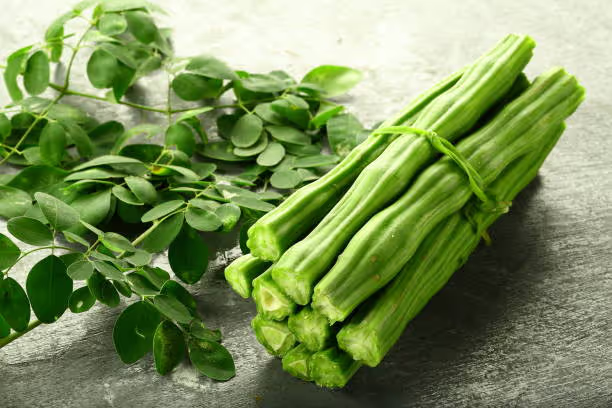
How to make moringa powder at home
If you're wondering how to make moringa powder, it’s easier than you think. Here’s a simple guide:
What you need:
- Fresh moringa leaves (from a reliable source or homegrown)
- A clean drying surface
- Grinder or blender
Step-by-Step process:
- Wash the Leaves
Gently rinse the moringa leaves to remove dirt or bugs. Pat dry with a towel. - Dry the Leaves
Spread them out in a shaded, well-ventilated area. Avoid direct sunlight-it reduces nutrient content. Drying takes 3–4 days. - Grind into Powder
Once completely dry and crispy, grind the leaves into a fine powder using a blender or coffee grinder. - Store in Airtight Jar
Keep it away from moisture and sunlight to retain potency.
Pro Tip:
Use your homemade moringa in smoothies, juices, teas. Knowing how to make moringa powder at home adds a fresh, personal touch to your wellness journey.
Moringa powder vs Other superfoods
Wondering how moringa compares to matcha, spirulina, or wheatgrass?
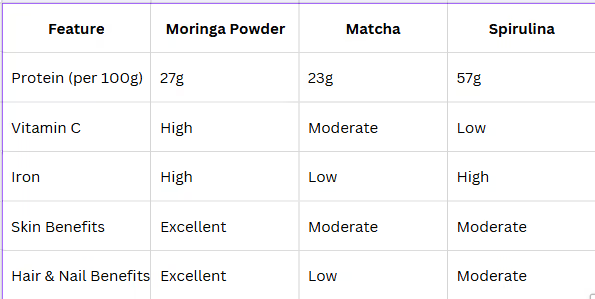
Moringa offers a broader nutrient profile-making it a cost-effective and holistic alternative to many imported superfoods.
Who can use moringa powder?
Moringa powder is safe for most people, including:
- Adults and seniors
- Teenagers
- Vegans and vegetarians
- People with anemia or fatigue
- Skin-conscious and beauty seekers
However, if you're pregnant, breastfeeding, or on medication, consult a healthcare provider before use.
Are there any side effects?
While moringa is generally safe, excessive intake can lead to:
- Upset stomach
- Nausea
- Interference with blood pressure or sugar medications
Stick to 1–2 teaspoons daily, and you’ll enjoy only the positive moringa powder benefits.
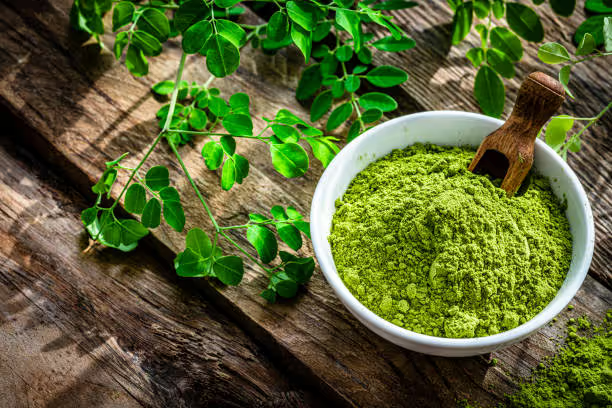
Final thoughts
From your plate to your beauty shelf, moringa powder is a natural multitasker. It boosts energy, supports immunity, and delivers amazing benefits for hair, nails and skin—all from one spoonful a day.
Whether you’re buying it ready-made or learning how to make moringa powder at home, you’re investing in your health and glow.
Sell these products free of cost in your store today
Moringa-based wellness and beauty products are in high demand. Don’t miss the chance to offer them in your online store.
Sell these products free of cost in your store today, open your own store today.
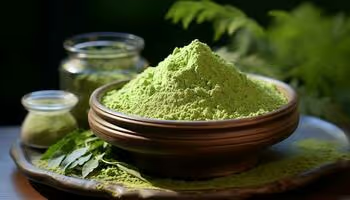
Health Foods
-
8
min read
Moringa Powder: The green superfood your body craves
Discover moringa powder benefits for immunity, energy, and glowing skin. Learn how to use it daily and how to make moringa powder at home.
Dr.Uttara Ghatge, B.D.S
-
July 29, 2025
Limited time offer: Free lifetime access
Create your store with Wcommerce today and enjoy a zero subscription fee forever. Don't miss this exclusive opportunity to maximize your earnings without any monthly costs.
Launch your store and start selling in 3 minutes
Get Started
+

Great!
You have reserved a store.
Our team will reach out to you shortly.
Our team will reach out to you shortly.
OK
Oops! Something went wrong while submitting the form.